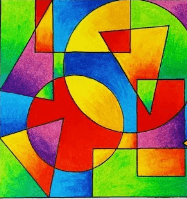Art:4grjvzw97ms= 2d Drawing

The significance of Art:4grjvzw97ms= 2d Drawing extends far beyond mere representation; it embodies a rich history of artistic evolution that reflects cultural and technological shifts. As artists navigate the complexities of line, form, and texture, they employ a variety of essential tools—from traditional pencils to advanced digital software—that enhance their creative expressions. Yet, the mastery of 2D drawing techniques remains a nuanced endeavor, prompting one to consider not only the methods employed but also the underlying principles that govern this art form. What insights might arise from examining these dimensions further?
Read also: Fanart:Fw7vld2ewys= Lumity
Importance of 2D Drawing
The significance of 2D drawing in various fields cannot be overstated, as it serves as a foundational tool for visual communication and conceptualization.
It enhances visual storytelling and allows for creative expression while anchoring design fundamentals.
Through artistic interpretation, skill development, and conceptual planning, 2D drawing fosters aesthetic appreciation and acts as a vital communication tool across disciplines, empowering creators to convey their visions effectively.
Historical Evolution
Throughout history, the evolution of Art:4grjvzw97ms= 2d Drawing has mirrored advancements in technology, culture, and artistic expression.
Its cultural significance is evident in various historical periods, marked by notable artists and diverse artistic styles. Each movement reflects societal influences and educational value, while modern digital advancements have transformed techniques and accessibility.
This transformation allows an unprecedented exploration of creativity within this timeless art form.
Essential Tools and Materials
Essential to the practice of 2D drawing are a variety of tools and materials that significantly influence both technique and outcome.
Drawing pencils, sketch pads, and charcoal sticks offer diverse expressive possibilities, while ink pens provide precision.
Various eraser types, blending tools, and measurement tools enhance accuracy and depth.
Additionally, digital software expands creative freedom, allowing for innovative exploration in the art of drawing.

Techniques for Mastery
Mastering 2D drawing requires a deep understanding of various techniques that enhance both skill and creativity.
Key practices include line art, which establishes clarity; perspective drawing, which adds depth; and figure sketching, essential for proportion.
Incorporating shading techniques and color theory enriches visual communication, while adherence to composition rules ensures balance.
Embracing digital drawing and gesture drawing fosters freedom in expression, ultimately refining artistic mastery.
Read also: Art:0lrgg-L33tc= Milton Glaser
Conclusion
In summation, Art:4grjvzw97ms= 2d Drawing remains a vital conduit for artistic expression, bridging the chasm between imagination and reality. Its historical evolution illustrates the dynamic interplay between cultural shifts and technological progress, shaping the modern artistic landscape. Essential tools and mastery of diverse techniques empower artists to breathe life into their visions. Ultimately, 2D drawing serves as a mirror reflecting the complexities of the human experience, where each stroke embodies the pulse of creativity and the essence of communication.






